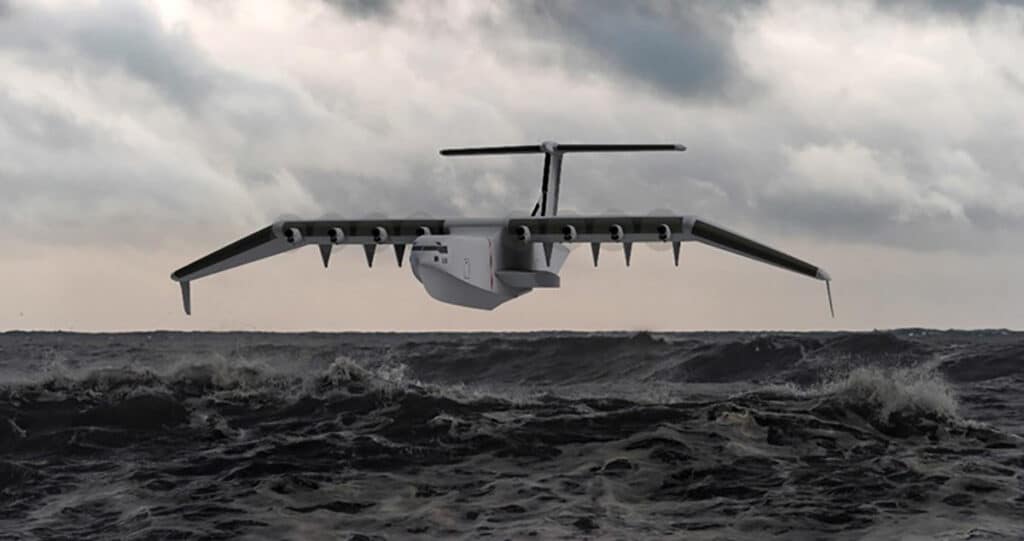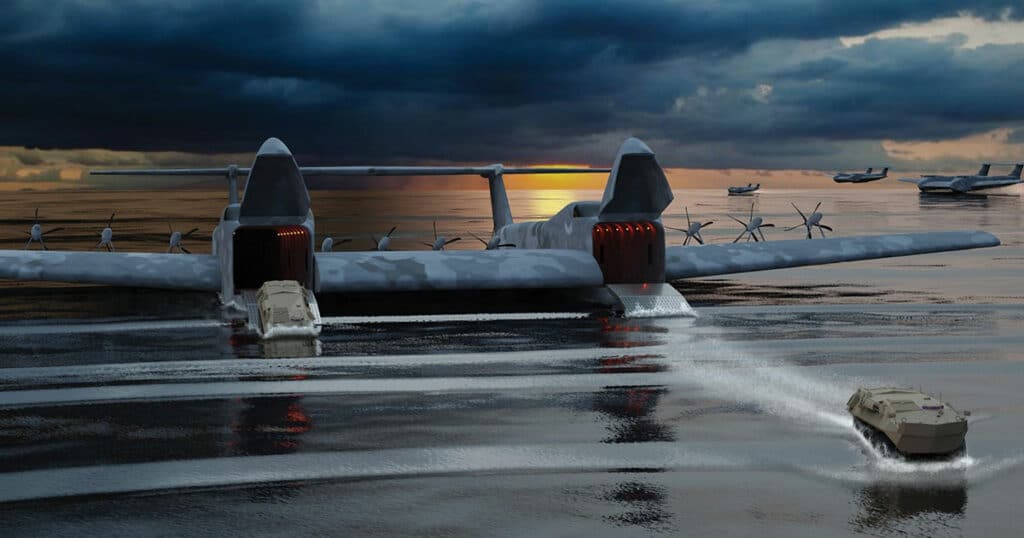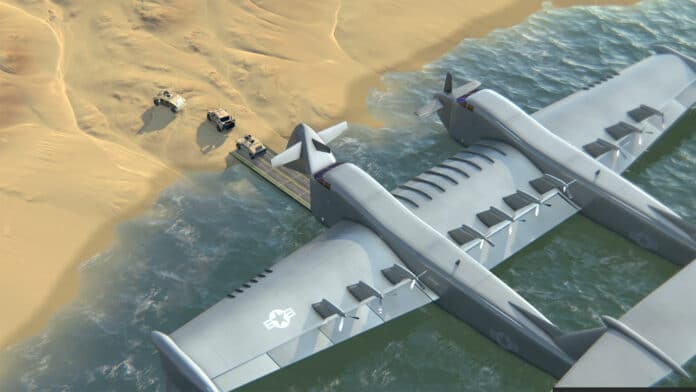The Defense Advanced Research Projects Agency (DARPA) has selected two teams – General Atomics, working with Maritime Applied Physics Corporation, and Aurora Flight Sciences working with Gibbs & Cox and ReconCraft – to develop designs for its Liberty Lifter Seaplane Wing-in-Ground Effect full-scale demonstrator.
DARPA’s Liberty Lifter program aims to demonstrate a leap ahead in operational capability by designing, building, floating, and flying a long-range, low-cost X-Plane capable of a seaborne strategic and tactical heavy lift.
The planned demonstrator will be a large flying boat similar in size and capacity to the C-17 Globemaster III transport aircraft. The objectives of the project include practicing take-off and landing in Sea State 4 and sustained on-water operation up to Sea State 5. The goals also include extended flight close to the water in ground effect with the capacity to fly out of ground effect at altitudes up to 10,000 feet above sea level.

For Phase 1 of the program, Aurora Flight Sciences is developing a point-of-departure design that closely resembles a traditional flying boat, with a single hull, high wing, and eight turboprops for primary propulsion. Aurora’s concept will employ a robust and adaptive control system designed to meet the challenges of operations to and from the sea surface and at low altitudes around waves and obstacles.
The high-wing monohull seaplane is designed for affordable full-scale production and extended maritime operations, including at high sea states and in high-traffic areas.
Meanwhile, the General Atomics team has selected a twin-hull, mid-wing design to optimize on-water stability and seakeeping. It employs distributed propulsion using twelve turboshaft engines.

Phase 1 is expected to last 18 months, with six months of conceptual design work and nine months of design maturation culminating in a preliminary design review. There will be an additional three months for manufacturing planning and test/demonstration planning reviews.
Phase 1 will then transition into Phase 2 in mid-2024 with continued detailed design, manufacturing, and demonstration of a full-scale Liberty Lifter X-Plane. DARPA anticipates teaming with one or more DoD Service and international partners for those activities and further development of the Liberty Lifter concept into an operational vehicle.
